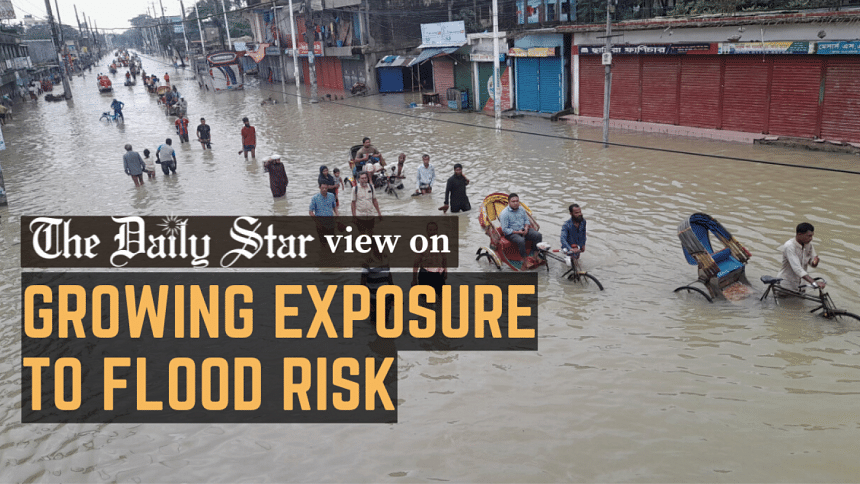Floodplain development is sabotaging our future

As a country caught in the throes of a profound climatic change, having just experienced the most devastating flood in recent years, Bangladesh can no longer deal with floods with a business-as-usual approach. Flooding patterns are changing fast, which requires a critical inspection of our vulnerabilities. Increasingly, however, flooding is as much a natural phenomenon as an artificial construct, thanks to human interventions in floodplains and other low-lying areas. As a new study shows, in less than two decades, the number of people exposed to flood risks in Bangladesh rose by 1.5 crore due to human settlements and infrastructural development in floodplains.
The study, covering the period between 2000 and 2018, demonstrates the extent of such unplanned development. And it's quite startling. Within the 2km river buffer locations across the country, forests shrunk by 91.98 percent, grassland 6.02 and barren areas by 27.92 percent. Meanwhile, built-up areas have increased by 11.06 percent over the period. On the other hand, the areas of human settlements and infrastructural developments have expanded to 778.74 sq km within that buffer jones. All this has been blocking rainwater discharge, among other consequences, thus prolonging flooding and putting more people and households at risk of submergence, especially those within the 2km river floodplains.
The recent Sylhet flood offers a perfect example. It was mostly the result of filling up of hoar areas and unplanned development of structures including roads, sluice gates, dams, etc. Floods brought on by heavy rains and onrush of water from the upstream couldn't subsist because of these barriers, leading to what one expert called "waterlogged flooding". A recurrence of this situation cannot be averted without improving the water retention capacity of haors and the navigability of connecting rivers. This also goes for all riverbanks and floodplains in the country, which are increasingly being encroached regardless of the threat it poses.
Rivers, haors and such waterbodies should be connected with other rivers, haors and waterbodies, and no unplanned infrastructure should be allowed in the floodplains. Rivers should also be regularly dredged. This should have been our goal given the risks we face. Unfortunately, despite the authorities acknowledging the risks of encroachment and loss of navigability, preventive measures have been few and far between. Most of those were not effective either, as evidenced by the futility of nationwide dredging initiatives that often saw scooped-out mud ending up back in rivers. As for clearing out floodplains, we rarely see any substantive action. The result is now for everyone to see.
This cannot be our reality going forward. With the unprecedented frequency and intensity of flooding threatening to sabotage our future, the government must stop encroachment of riverbanks and floodplains, and any infrastructure hampering the normal functioning of rivers and haors must be removed. Citizens, too, must be aware of the long-term effect of such developments.

 For all latest news, follow The Daily Star's Google News channel.
For all latest news, follow The Daily Star's Google News channel. 





Comments